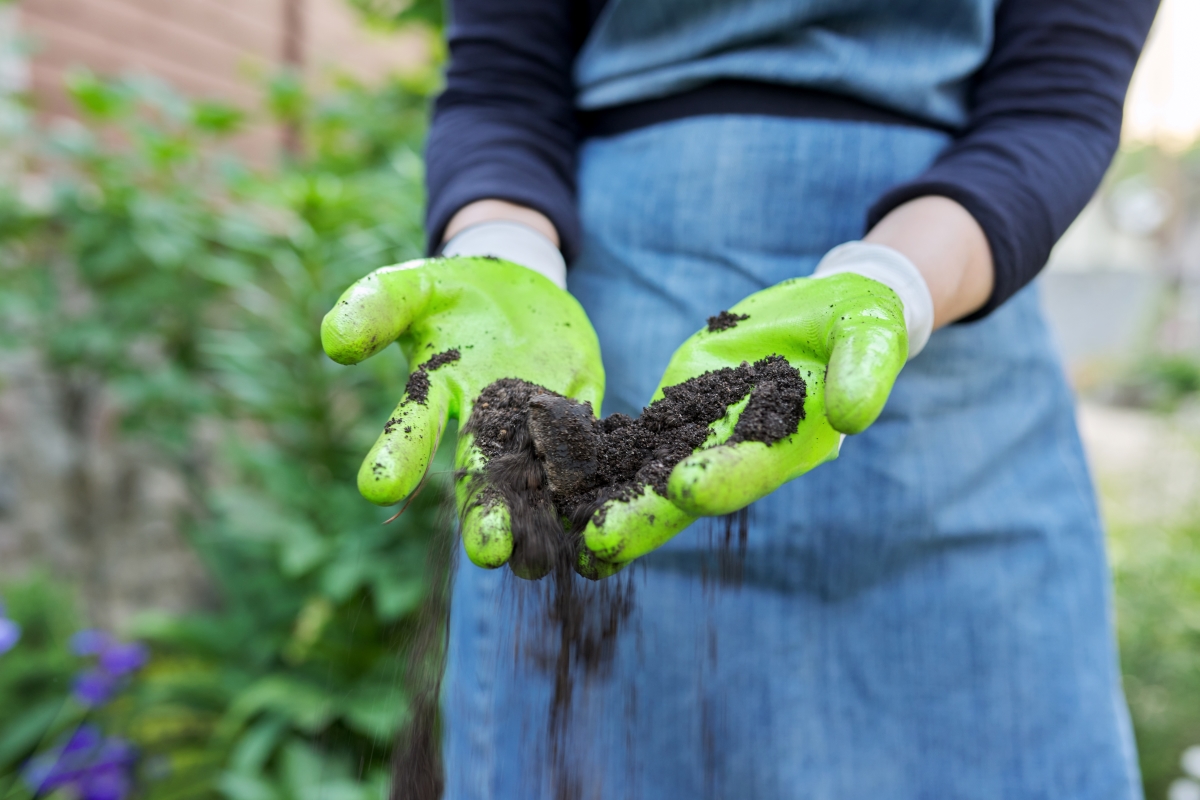Producing fertiliser from organic waste in Africa
New circular economy projects promise to make agriculture more sustainable.
By Johan Burger

Producing fertiliser from waste in Africa is not a new phenomenon. However, we are seeing the emergence of a circular economy that is connecting entrepreneurs as well as smallholder farmers in Africa. Although this is not manufacturing in the traditional sense, the outcome of value-added products supports the agricultural sector.
In Ghana, young entrepreneur Audrey S-Darko with some of her fellow students founded the Sabon Sake project and developed a small bio-compost fertilizer plant in the South Volta region in 2018 from sugarcane waste using biotechnology. This fertilizer improves soil quality and increases crop yields. She has entered a market that uses a lot of chemical fertilizers. Ghanian farmers burn crop waste in the fields after the harvest. This causes pollution and damages the soil. After setting up the plant, S-Darko brought together a network of 30 sugarcane farmers and trained them on how to produce and use the organic fertilizer. She intends to scale-up the project to support vertical and urban farmers too. It is common for people in Ghana to grow fruits and vegetable in their backyard or homes. This is a large untapped market with huge potential.
In Morocco, Compost Systems, which specialises in the biological treatment of waste, received a contract to build a composting plant for organic agricultural waste. The plant will serve as the pilot phase of a project to set up a regional composting platform. The goal of the platform is to add value to organic agricultural waste in the Sous-Massa region of Morocco. The region produces 1.87m tons of such waste annually.
While the project is still in its experimental phase, the future facility will be able to produce up to 100,000 tons of fertiliser per year from the waste, which will improve agricultural yields. Agriculture is a strategic sector that represents 12% of the GDP and employs 15,000 people in Morocco.
Like the small venture in Ghana, the Sous-Massa plant will reduce organic agricultural waste while contributing to the development of sustainable agriculture.
In Gambia, the Kanifing Municipal Council (KMC) launched a project in July 2021 to reduce the amount of organic waste sent to a local landfill. The project converts waste into fertiliser and biomass briquettes. Currently, the waste collected in the city of Kanifing is taken to an unregulated landfill located near Serekunda - the largest city in Gambia. Now, under this project the organic waste is collected from markets, and converted into fertiliser and sold by female vendors for profit. If successful, it could be a model that could be replicated in other towns and villages in West Africa.
Deforestation is a serious problem in Gambia. The nation lost over 100,000 hectares of forest between 1998 and 2008 – mostly to commercial logging and firewood. Biomass briquettes, which comes out as another by-product from the Kanifing organic waste project is now use by local households for cooking instead of wood, helping to mitigate the deforestation and reduce CO2 emissions.
The Japan International Cooperation Agency (JICA) has invested US$2.5m in Sanergy, a US-based firm that has developed circular economy solutions in Kenya. Its recently built (2021) factory in Nairobi is said to be up the largest insect feed factory in East Africa Its model entails the collection of human excreta and organic waste from slums and transforming it into insect feed, organic fertilizer, and biofuel. It does so with the help of Black Soldier Flies (BSF). Black soldier fly larvae (BSFL) are used to compost waste or convert the waste into animal feed. Fly larvae are among the most efficient animals at converting biomass into feed. The global market for BSF is expected to grow at an annual rate of 34.7% over the next 10 years reaching US$3.4 bn.
The population of Nairobi, Kenya’s capital, is expected to reach 5.94m by 2030. The waste volume of the city is expected to grow to 3,990 tons daily by 2030. almost half of Nairobi’s waste is dumped illegally. Some 1.8m cubic metres (m3) is brought into waste disposal sites that have a capacity for processing only 500,000m3. Only 12% of Nairobi is connected to the Kenya sewer system. Human waste has long been a big urban waste problem in the city. Lack of decent sanitation has had a negative impact on people’s health in slums like Kibera, where low-income families live. The firm is now preparing to expand its business outside East Africa.
Additional readings:
Anon. 2021. Ghana turns sugarcane farming waste into organic fertilizer. DW. 12 November 2021. Available at https://www.dw.com/en/ghana-turns-sugarcane-farming-waste-into-organic-fertilizer/a-59730966. Accessed 20 November 2021.
Anon. 2021. Transforming collected waste into insect feed and organic fertilizer in Kenya: Impact investing in Sanergy (Private Sector Investment Finance). Japan International Cooperation Agency. 8 October 2021. Available at https://www.jica.go.jp/english/news/press/2021/20211008_10e.html. Accessed 20 November 2021.
Magoum, I. 2021. Morocco: Compost Systems to turn agricultural waste into fertilizer. Afrik 21. 17 November 2021. Available at https://www.afrik21.africa/en/morocco-compost-systems-to-turn-agricultural-waste-into-fertilizer/. Accessed 20 November 2021.
Magoum, I. 2021. Gambia: Kanifing to convert organic waste into fertiliser and biomass. Afrik 21. 29 July 2021. Available at https://www.afrik21.africa/en/gambia-kanifing-to-convert-organic-waste-into-fertiliser-and-biomass/. Accessed 20 November 2021.
Research and Markets "Black Soldier Fly Market by Product" (2021)








